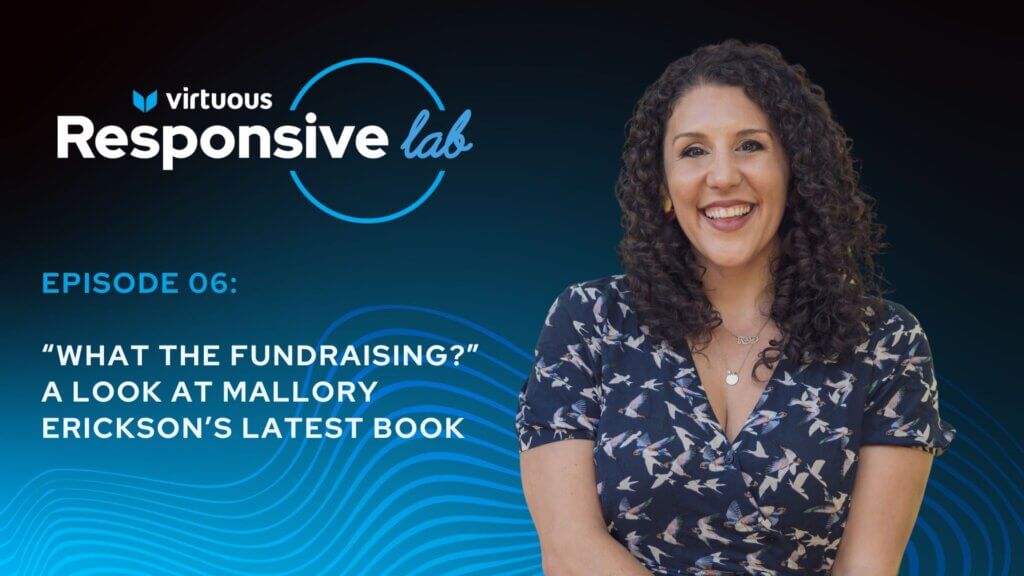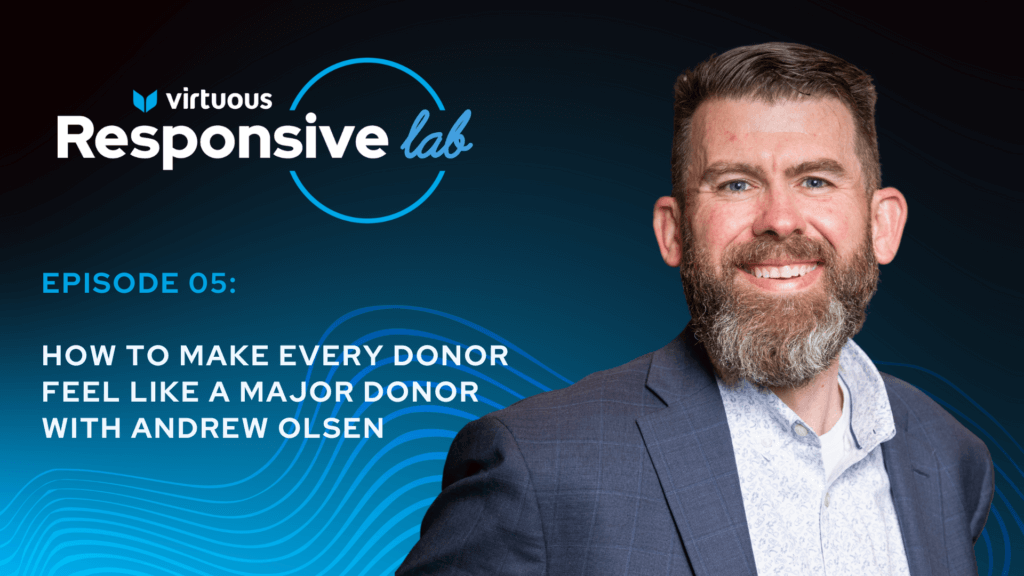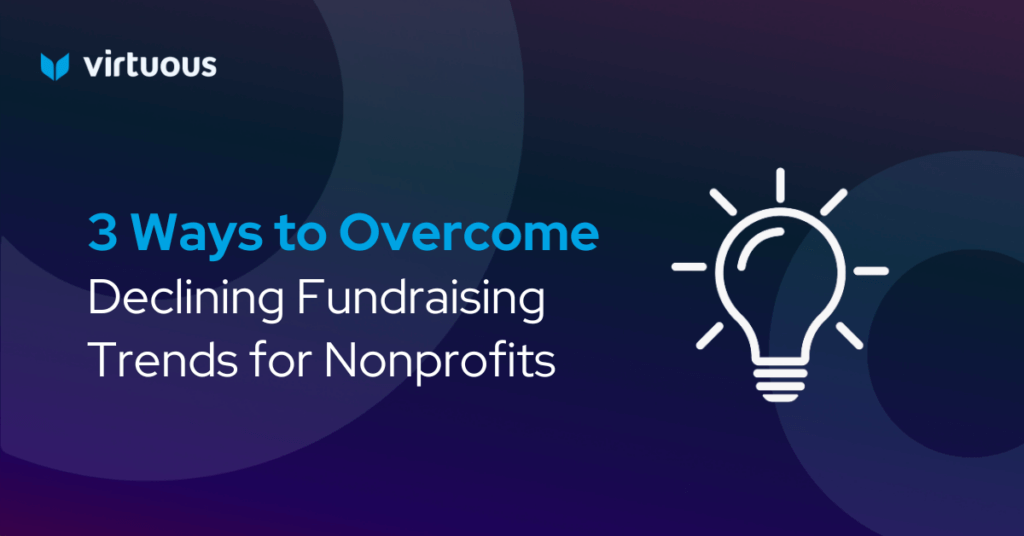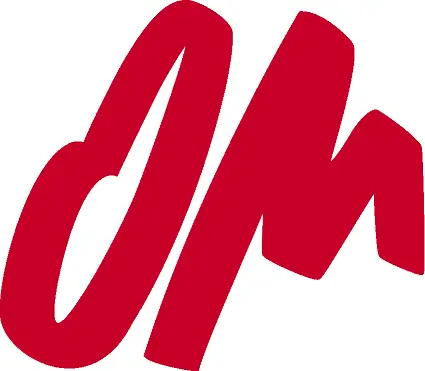Whenever nonprofit professionals talk about fundraising and communications, it doesn’t take long for one organization to come up as a shining example.
Since its founding, the clean water nonprofit has drawn attention and admiration for their innovative approach to fundraising. We were very pleased to welcome co-creator Vik Harrison to the Responsive Nonprofit Summit, where she led a session on monthly giving and how it revolutionized fundraising at charity:water.
In addition to being the co-creator of charity:water, Vik is also the founder of The Branded Startup, an agency that helps purpose-driven organizations make their mark. Here are the top lessons gained from her session.
Monthly Giving Program Strategies
1) You Can’t Rely on One-Off Fundraising
As Vik explained, charity:water did a lot of fundraising activities in their first decade of operation. Peer-to-peer birthday campaigns, major brand partnerships, immersive experiences, and a giant annual formal gala were all part of their fundraising.
“It was going really well,” Vik says. “However, we were becoming really exhausted.”
Any kind of fundraising that relies on a “one-off” effort, like an event or single peer-to-peer campaign, requires a lot of time, energy, and resources. Then, once the event occurs, you have to rally all the time, energy, and resources for the next thing, all over again. It’s a constant cycle, one that eventually drains teams and wastes energy.
Furthermore, this kind of fundraising isn’t always reliable. “Fundraising in this way has its ups and downs,” Vik says, “You’ve got good months and you’ve got low months. Planning for revenue was not as easy as it could be.”
Despite the exhaustion, charity:water didn’t have a concrete reason to change their strategy until 2015, the first year they didn’t reach their fundraising goals. With fundraising numbers heading in the wrong direction for the first time, the team had to get real about creating a more sustainable and scalable fundraising stream.
Instead of continuing on the cycle of constant one-offs, they decided to focus on a model that was repeatable by design: The Spring.
2) Raise More with Recurring Gifts
“All roads lead to The Spring,” Vik explained. It’s charity:water’s flagship giving product, the one that everything else relies on. The Spring is “a passionate and determined group of monthly givers on a mission to end the water crisis in our lifetime.”
While monthly giving isn’t a new concept, charity:water hadn’t understood how to make it innovative and exciting for their donors. By viewing it as a product donors subscribed to, like Netflix or Stitchfix, complete with a brand, story, and community associated with it, they saw how it could take them to a new funding model, one that was based on repeatability.
Recurring donors have a 5x higher lifetime value than one-time donors. The organization’s previous efforts attracted one-time donors, who weren’t likely to give again without another ask or event from charity:water. The Spring was an effort to cultivate a community of recurring givers.
“The Spring isn’t just a monthly giving program,” Vik explains. “It’s about cultivating community and inspiring donors. We put language around it, we gave it a name.” Donors aren’t simply asked to check a “make gift recurring” box, they’re invited into a strong community of world-changers.
The results have been tremendous. “It really worked,” Vik says, “The Spring has completely revolutionized our revenue model at charity:water.” In 3 ½ years, the community of donors has grown to 62,000 members, with a consistent 40% growth in revenue, year-over-year. Currently, charity:water receives $19.8 million annual recurring revenue from the program.
Unlike one-off fundraising activities, The Spring attracts donors who are committed long-term. Members of The Spring rarely cancel their subscriptions, and charity:water experiences minimal churn.
3) Cultivate a Product Mindset
Vik credits a mindset shift in charity:water’s success. They pivoted from a project mindset to a product mindset. Monthly giving can be a meaningful product. Vikoria defined a product as “something that creates specific value for a specific group of people, and is something you invest in, improve, and refine over time.”
A product mindset:
- Puts the need of the user first
- Adjusts process to achieve outcome
- Adjusts the scope, time, and budget as new insights are discovered about user behavior
- Creates the smallest working version, tests with real users before going all-in
- Focuses on long-term, ongoing improvement
A project mindset:
- Puts the goals of the organization first
- Prioritizes process over outcome
- Pre-determined scope, time, and budget, inflexible to real-time feedback
- Builds for months in secret, then reveals complete thing in a “ta-da” moment
- Short-lived burst of activity with a deadline
Which mindset dominates at your nonprofit?
For many, it’s a project mindset. The organization sets the goal, builds the initiative without real-time feedback, reveals the initiative as a complete finished object, and then analyses if it worked or not. If you’ve ever created an entire campaign, launched it, gotten no response, and then concluded, “Well, that didn’t work!” you’re probably operating in a project mindset.
A product mindset enables you to use donor input to create more meaning and a better experience for them. You can course-correct as you go, trying new things, and constantly improving. This is a radical departure from what most nonprofits are doing, but as charity: water experienced, making the change can be revolutionary.
4) Create a Meaningful Product
Once you’re thinking in terms of providing your donors with a meaningful product, it makes sense that a traditional “check this box to make gift recurring” approach simply isn’t enough. A “set it and forget it” approach to monthly giving misses out on the meaning that makes donors engage with the program long-term.
Instead, you need to create that specific value your donors want–meaning, inspiration, community, involvement. You can do this by telling a story and providing your monthly donors with special attention and access.
Tell a Meaningful Story
People make giving decisions based on emotions, which they then back up with logic. You have to engage their emotions immediately by telling a meaningful story about your mission. For charity:water, that meant creating a film that has one, singular purpose: inspiring people to join The Spring.
In addition to telling a story about your work, you must also be intentional about the story you tell your supporters about themselves. What is your monthly giving product? What does it mean to be part of it? Vik communicates that The Spring is a “secret special club of do-gooders, helping us create a historic moment.” Who are your monthly donors? What do you want to celebrate about them?
Make a Meaningful Connection
People who give want a meaningful experience, not isolated numbers without story or context. A list of donation amounts doesn’t mean much by itself–why should a donor give $100 over $50? You can help them understand by explaining what each donation amount can do.
This doesn’t have to be granular accounting. Even something as simple as, “$50 a month provides the school fees and supplies for six kids a year,” or “$100 provides three new sewing machines for our trade school every year, so refugee mothers can learn a marketable skill” can make donation amounts mean more.
Build a Meaningful Community
Your monthly donors are there for you, every month, year-round. What do they get in return? Reports, gratitude and thank you letters, good news, information, stories, and an excellent customer service experience are all ways to cultivate strong donor relationships.
Vik recommends regularly inviting monthly givers to join Zoom calls to ask questions and get updates from someone on your team. This personal connection goes a long way to making people feel engaged and special.
Kickstart Your Monthly Giving Program
The “product mindset” Vik describes is a crucial part of a responsive fundraising approach. It allows you to really listen to donor signals and give them what they’re already telling you they want.
If you’re ready to launch a monthly giving product, Vik teaches an entire class on that topic. If you’re feeling burned by previous unsuccessful attempts, grab her free download about the top 5 reasons why monthly giving programs fail, and see what to avoid this time around.





